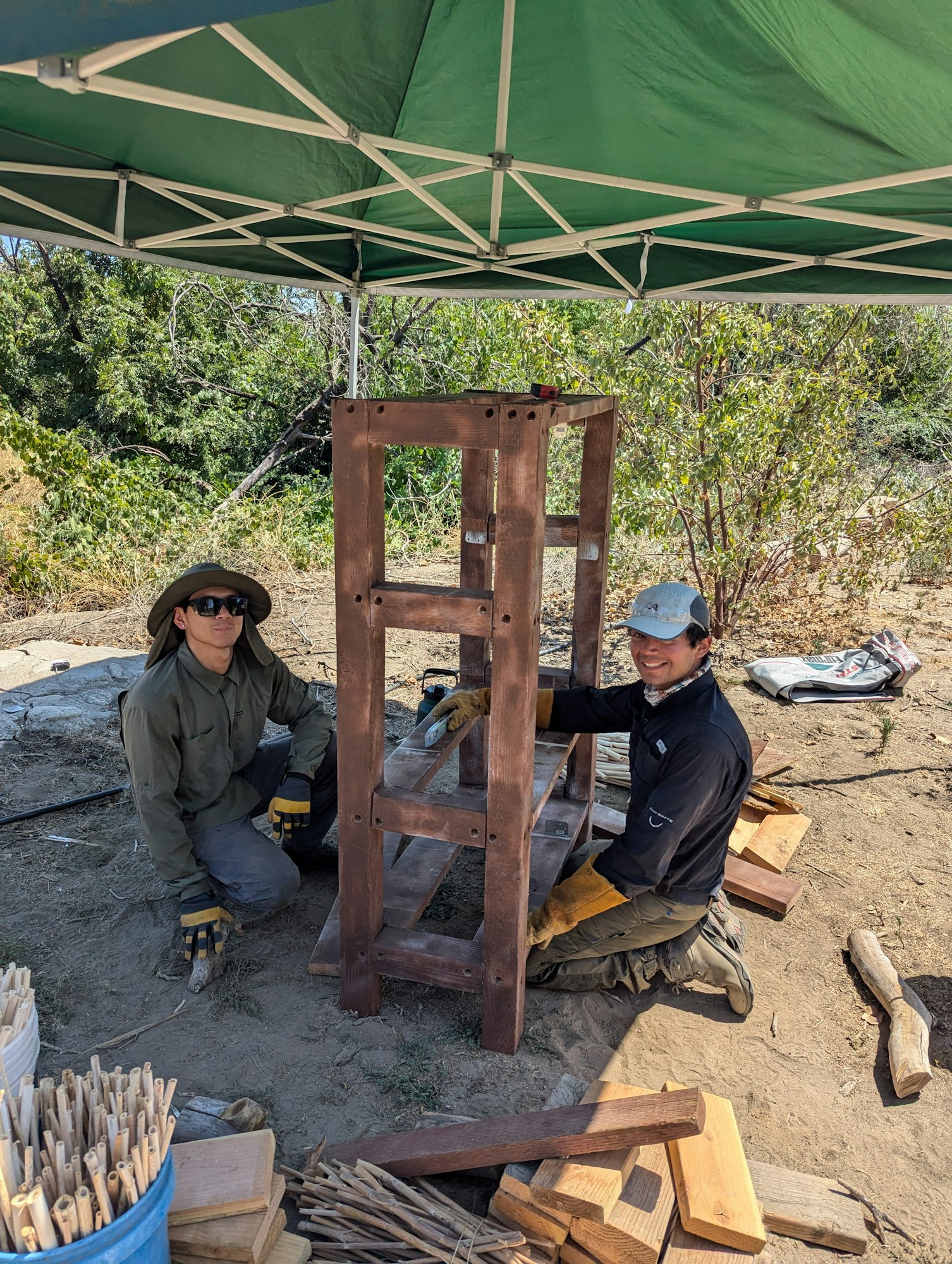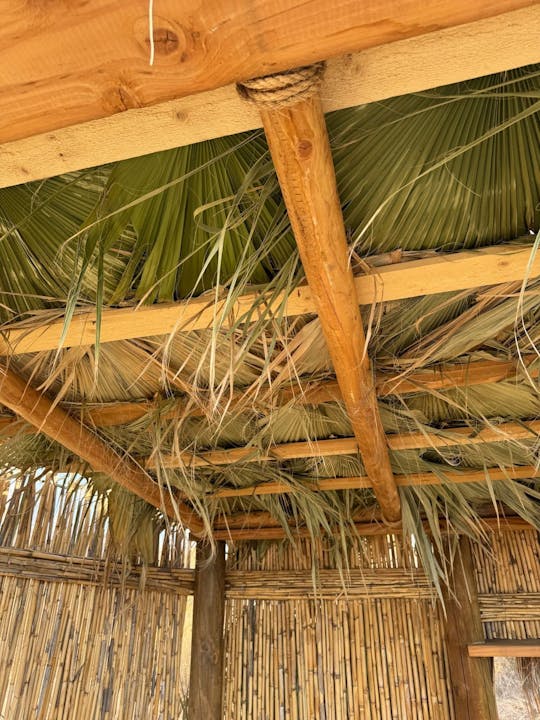The Buzz Around LRPPG’s Newest Structure
Sometimes conservation work involves glamorous tasks, like planting vibrant flowers or towering trees. Other times, it means sweating through the afternoon sun, wielding power drills, and getting strangely excited about sticks. Recently at LRPPG, we threw ourselves into the latter, joyfully embracing the messy, buggy, and occasionally poetic process of building our first-ever bee hotel.

The initial concept seemed simple enough:use what the Parkland already had on hand to build something that would support our local pollinators. All we really had to do was take stock of what was already there and tap into our collective creativity. Our first target was the poison hemlock (Conium maculatum) spreading along our trails in chaotic clusters, practically shouting “Pick me! I’m invasive!’ So we did. From there, volunteers snipped the flower stalks (or inflorescences, for the bio-curious) from our white sage (Salvia apiana) in the garden. This pruning not only provided extra nesting material; it also encourages the sage to grow back even fuller next season. Finally, we set our sights on the hefty pecan logs, sourced from the trees in our grove that were at the end of their natural lifespan. These aging trees had been trimmed and carefully removed due to safety concerns, but what used to be a hazard became the foundation of our “Air Bee-N-Bee” bee hotel.
This is how we work at LRPPG. Every material we gathered for the hotel served two purposes, both bringing the project to life while simultaneously improving the Parkland itself. We weren’t just building a hotel; we were restoring habitat, supporting pollinators, and making the site safer for visitors. It turns out when you focus on one small thing with care, everything else around it benefits.
Then came the holes. Drilling them turned into an oddly meditative task. One part geometry. One part existential pondering. We carefully spaced them while varying the depths and diameters, aiming for the bee expert-recommended 4 to 6 inches - plenty of space for a solitary bee to tuck away her eggs with a little stash of food and carry on. And sure, we wondered (half-jokingly) if the bees would appreciate the effort. Were we overthinking it? Absolutely. Did that stop us? Definitely not.

Still, there was this tiny nagging question buzzing in the back of our minds: what if no bees showed up? What if we built a hotel that no one checked into? But according to IERCD’s Restoration Specialist Chris Casillas, our worries didn’t last long. “While we were still working on the bee hotel, a bee approached the logs and began filling one of the holes, just around 30 minutes after we set them up! It was an amazing feeling to see our work immediately put to use, reassuring us that the bees would indeed make the hotel their home and easing our initial worries that they might not use it at all.”
Our first guest? A leafcutter bee (Megachile spp.). Small, sleek, and totally efficient! As she zipped in and out of the holes that we so carefully drilled, we realized she was putting us all to shame. The bee knew exactly what she was doing. While we had spent days planning, prepping, and second-guessing, she took one look at the available rooms and got straight to work. She lined her new apartment with neat little circles of leaf like she had done this thousands of times before. No hesitation. No overthinking. Just a quiet confidence that said “This will do nicely.”
The hotel isn’t just for bees - it’s for us too. With more pollinators around, our gardens thrive. Native plants get stronger. Visitors walk through color and scent and motion, all thanks to a few bug-sized builders doing what they’ve done for millennia. It’s full circle thinking once again: care for the tiniest things and the whole system responds.
In those quiet moments of observation, we didn’t find glamour or majesty. What we found was something smaller, steadier. The glint of wings in sunlight. The gentle hum of effort. The reminder that conservation doesn’t always need a big campaign. Sometimes, it just needs someone to notice what’s already there, and make room.
So next time you’re at LRPPG, stop by the bee hotel. Don’t worry about staying long. Maybe you’ll see a flicker of movement disappear into a hollow stalk. Maybe you’ll hear that small, insistent hum of something at work. Maybe you’ll feel it - the buzz of something good, built with care, still unfolding.
P.S. Want to learn more about our bee hotel and its guests? Check it out here.
P.p.s. Interested in creating your own native bee hotel in your backyard? Check out this plan from the LA Natural History Museum or these resources from the Xerces Society.

